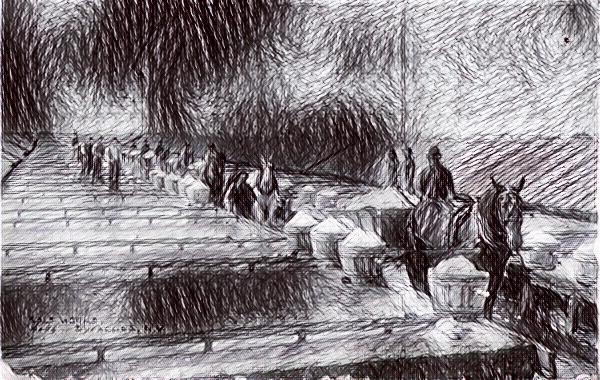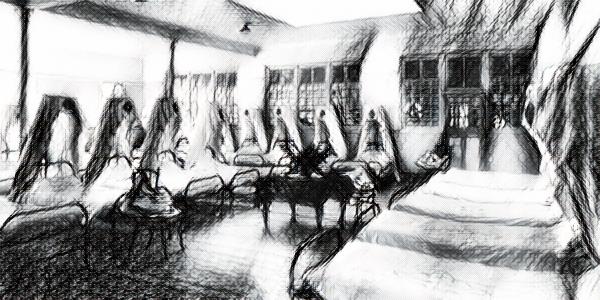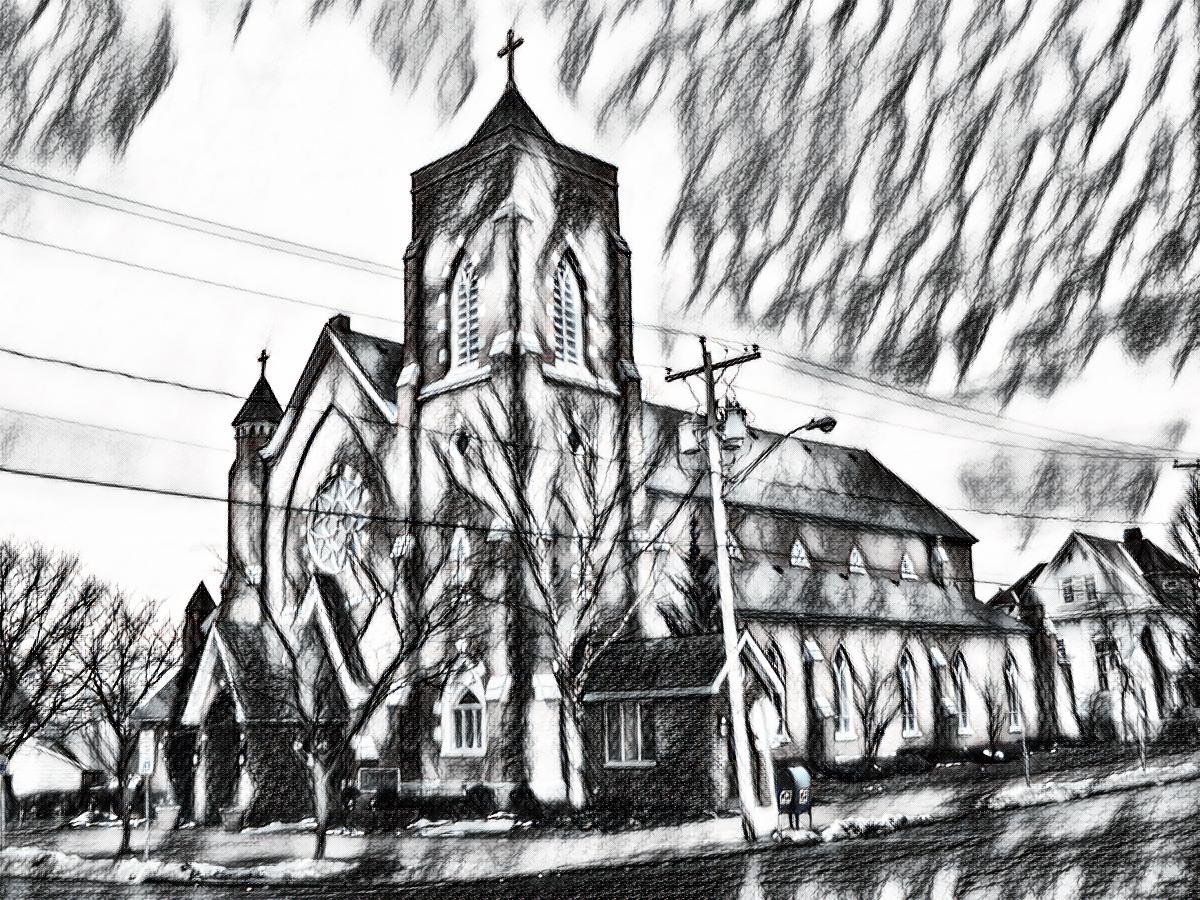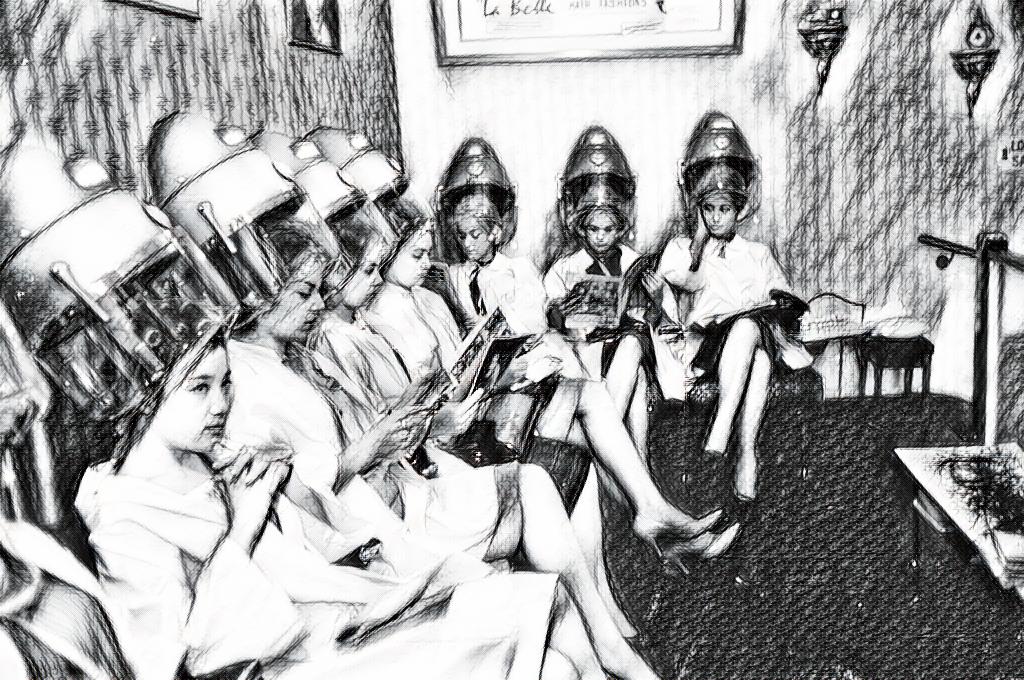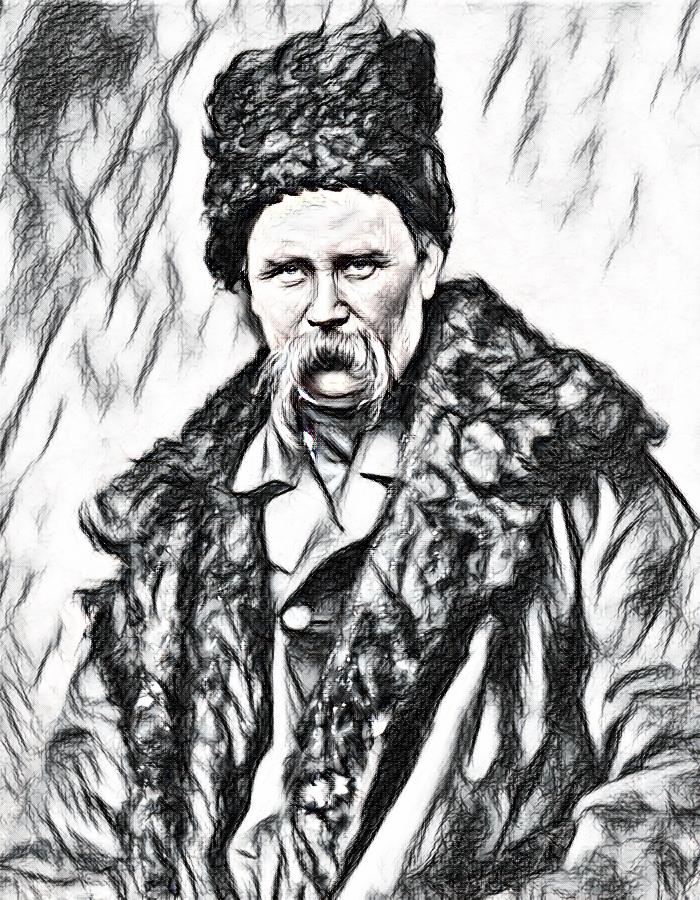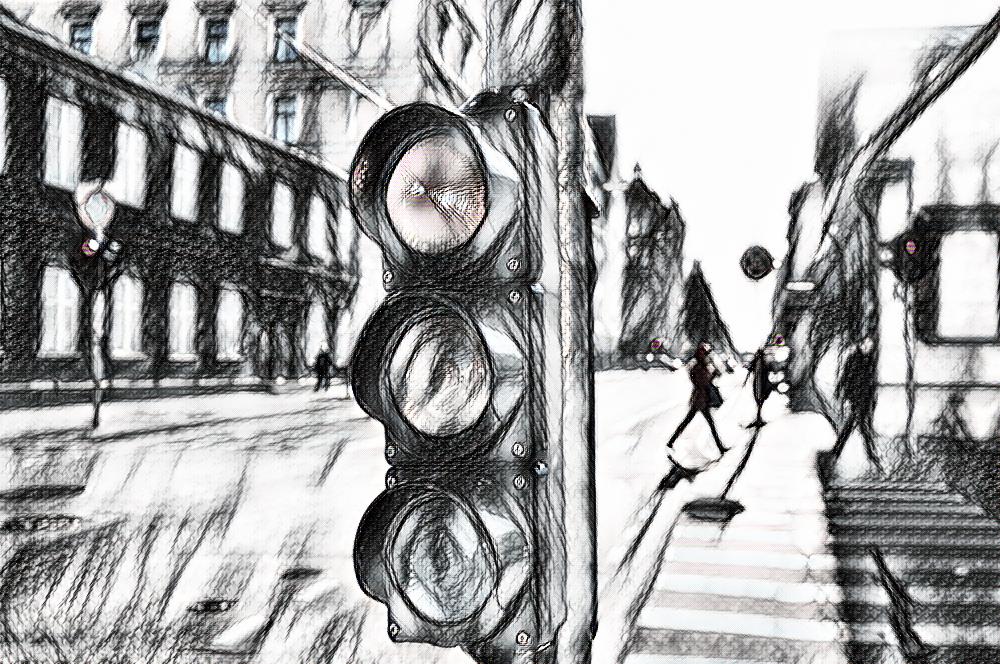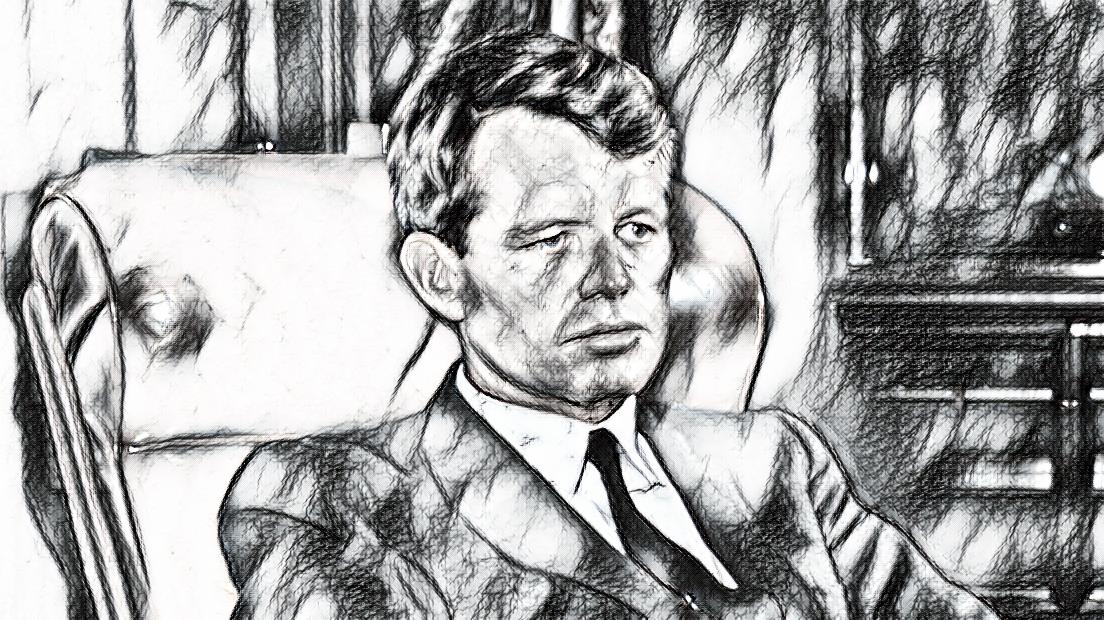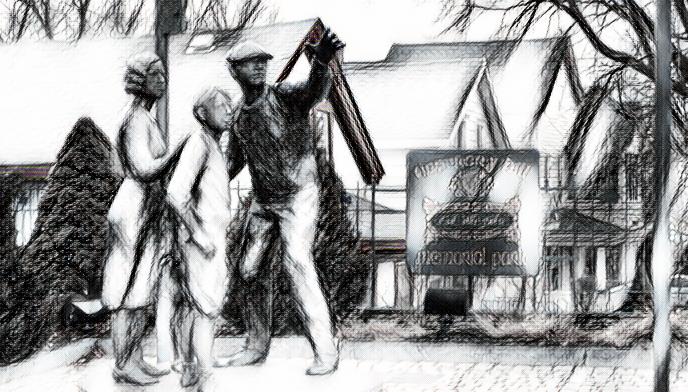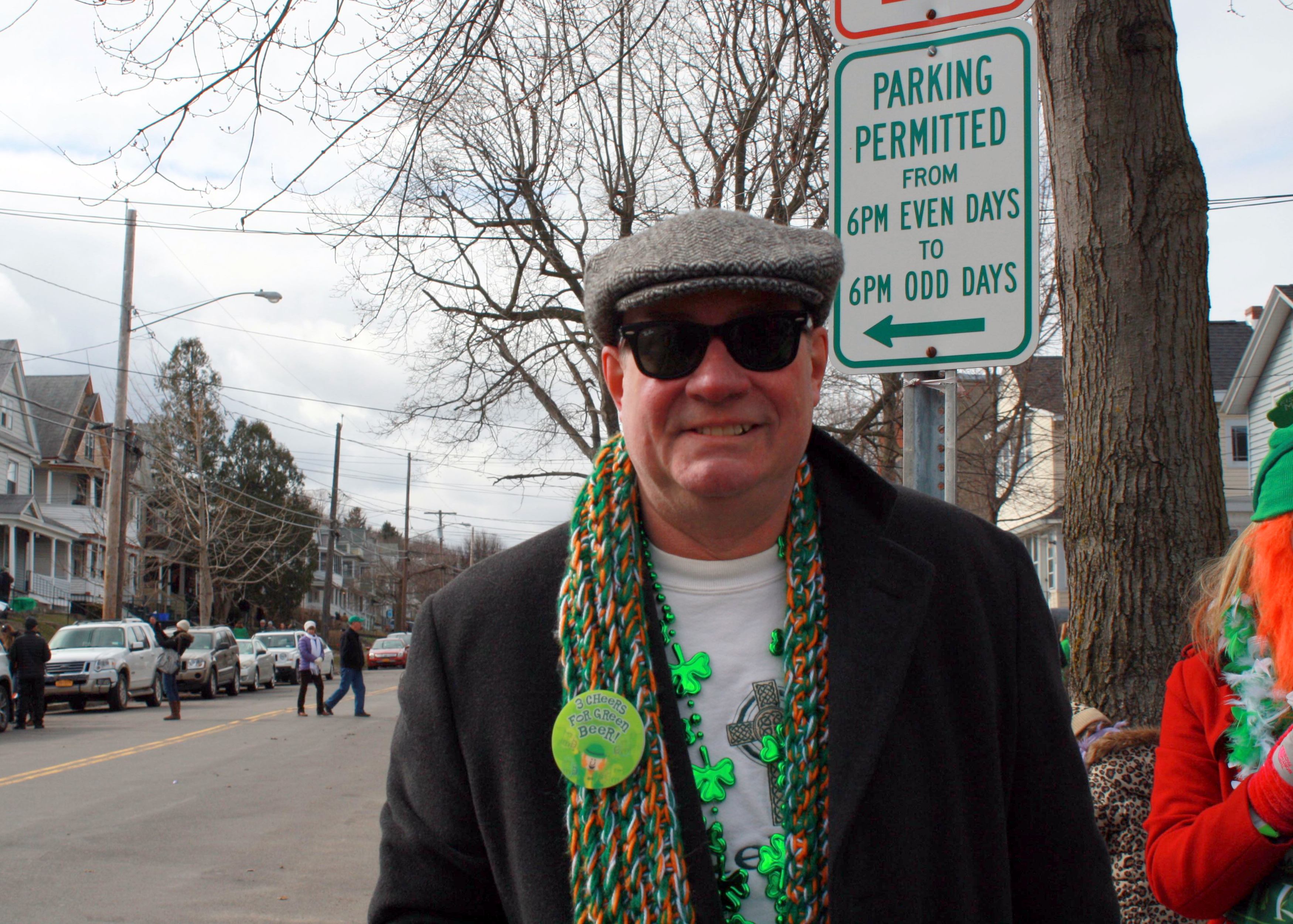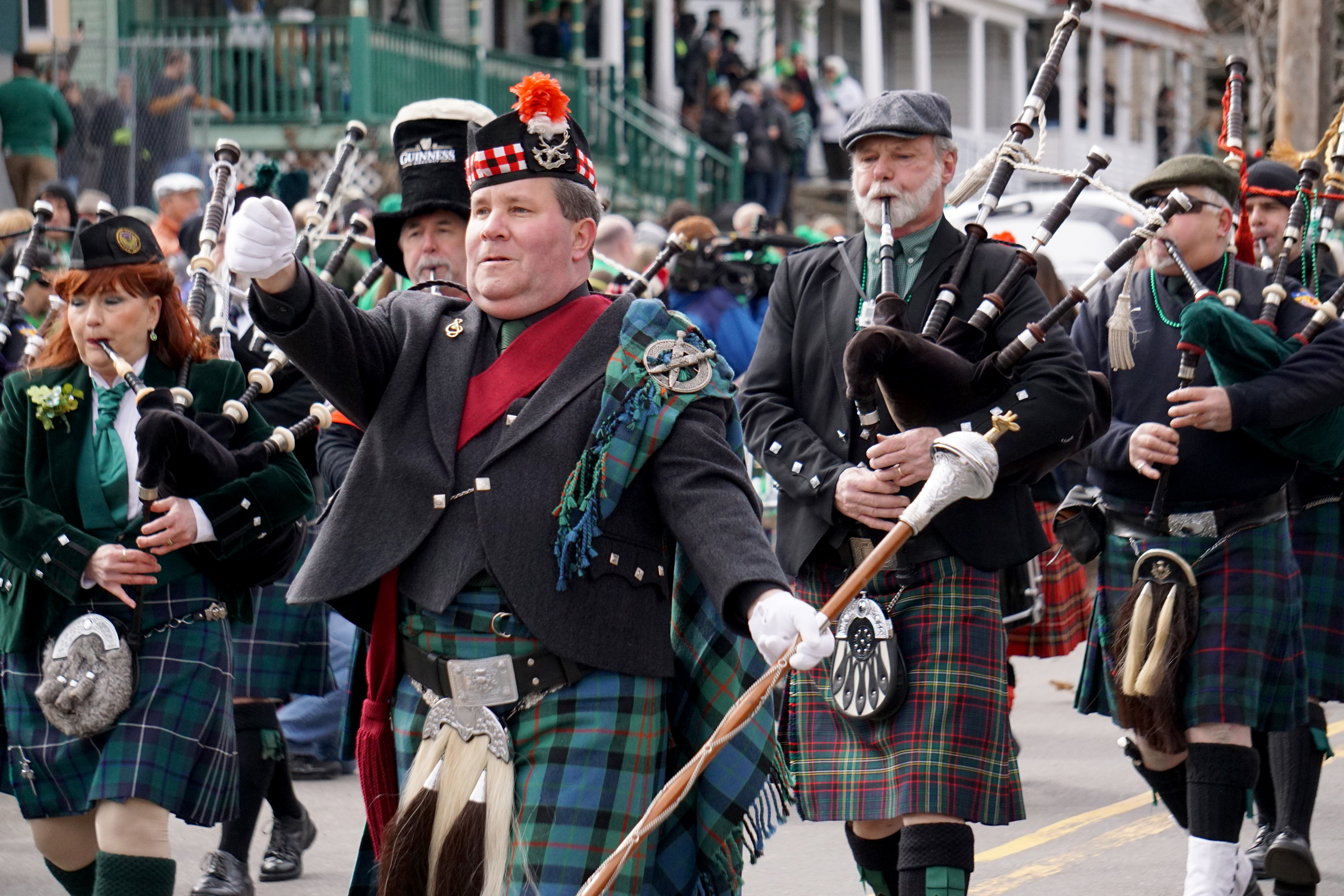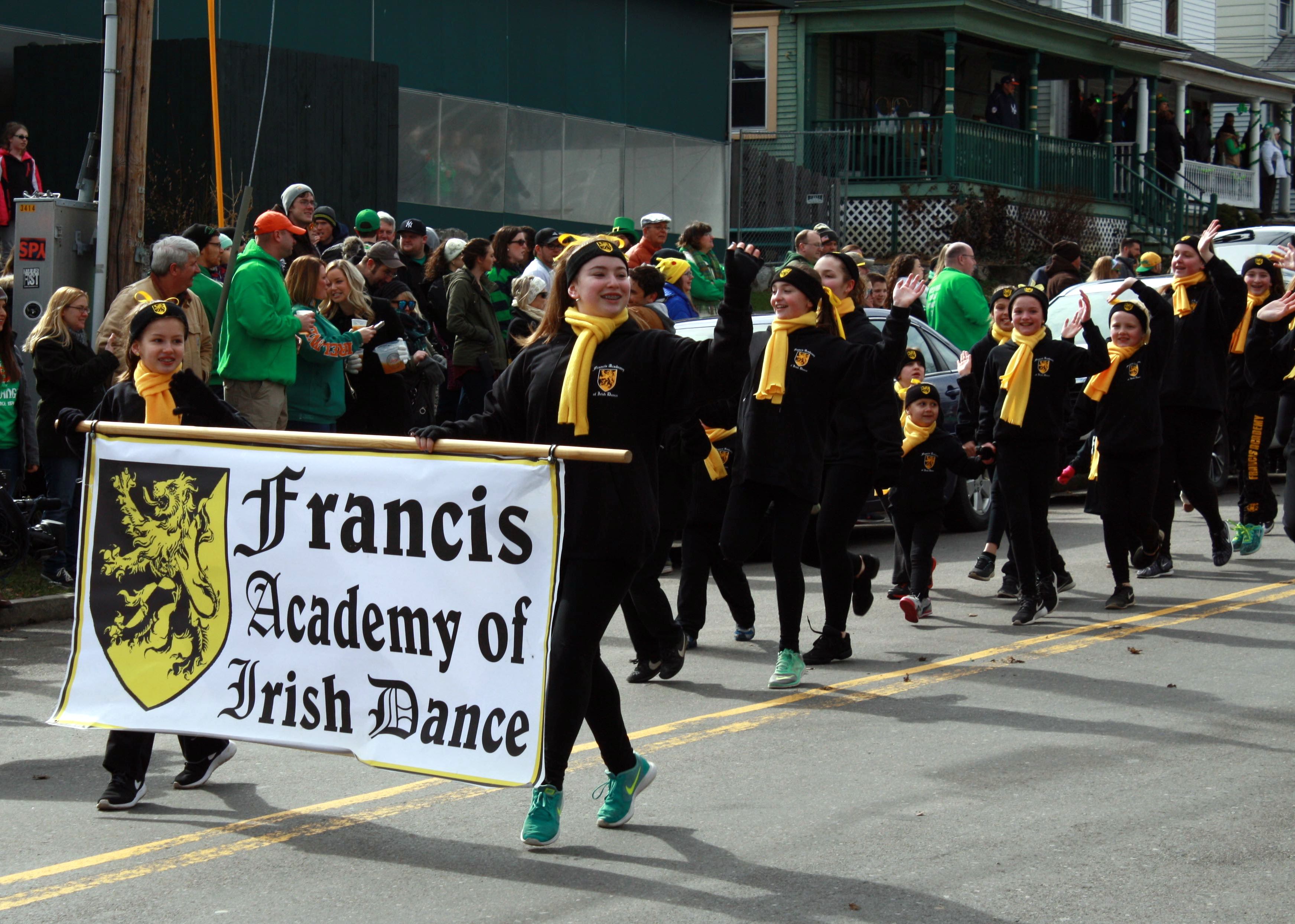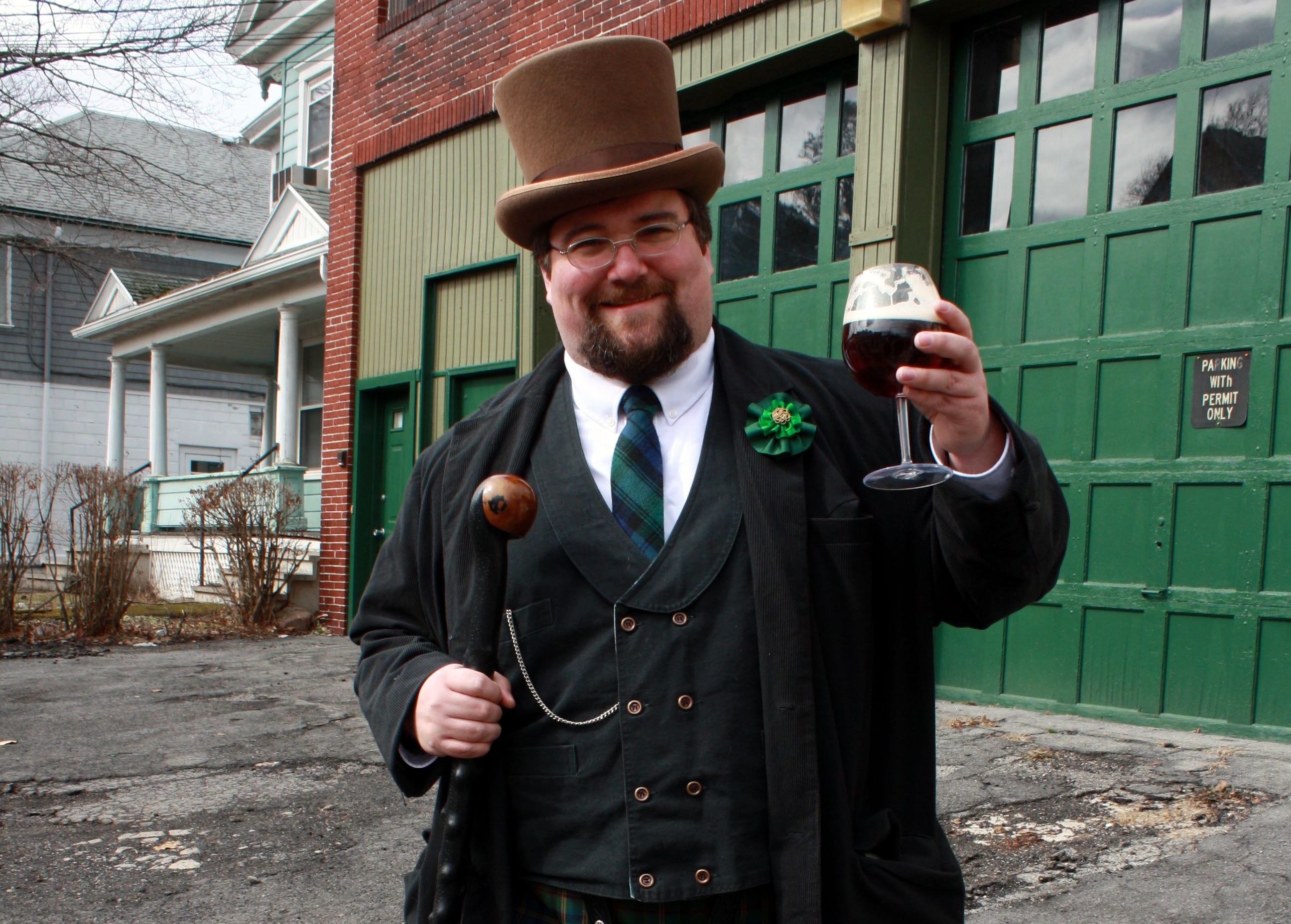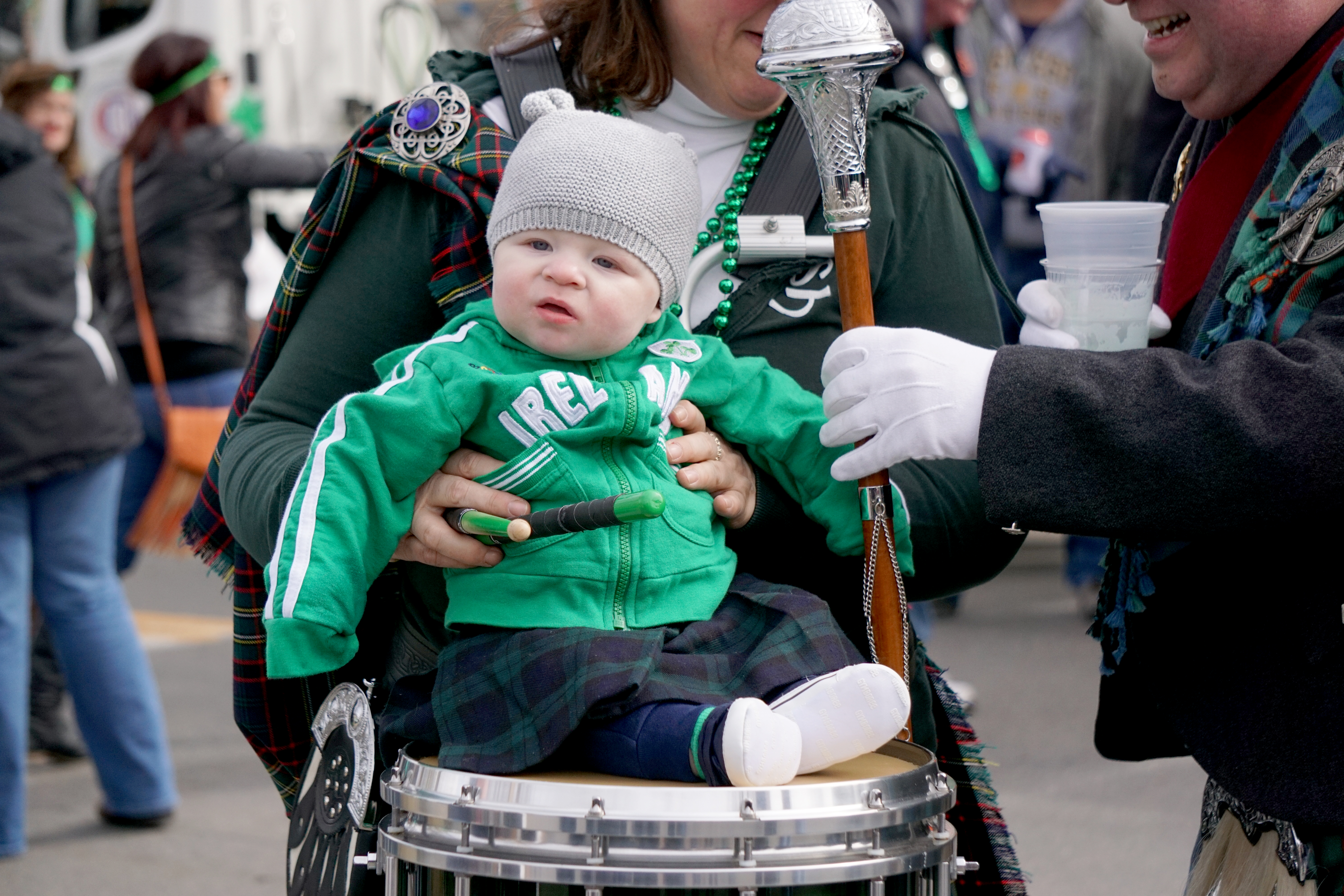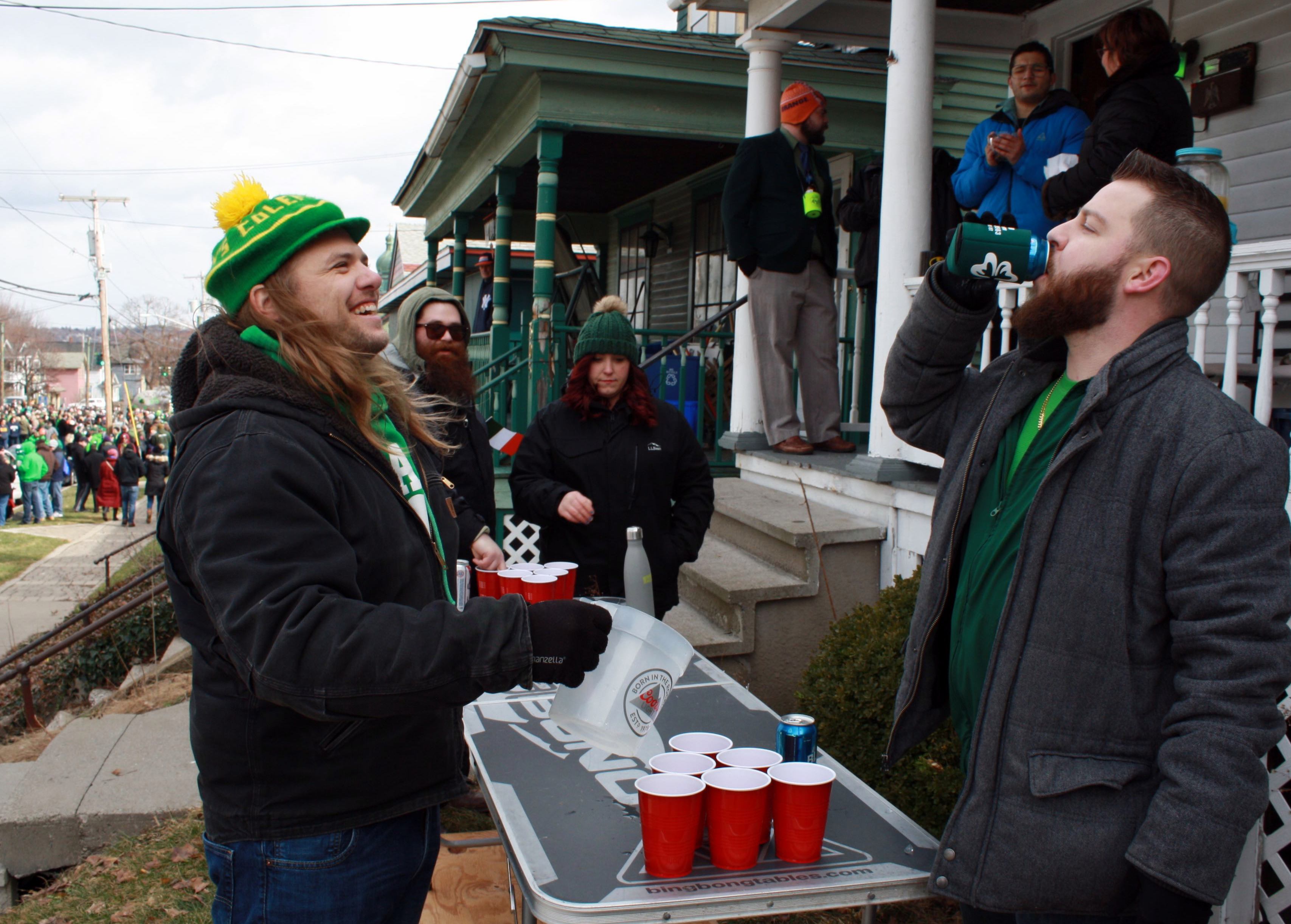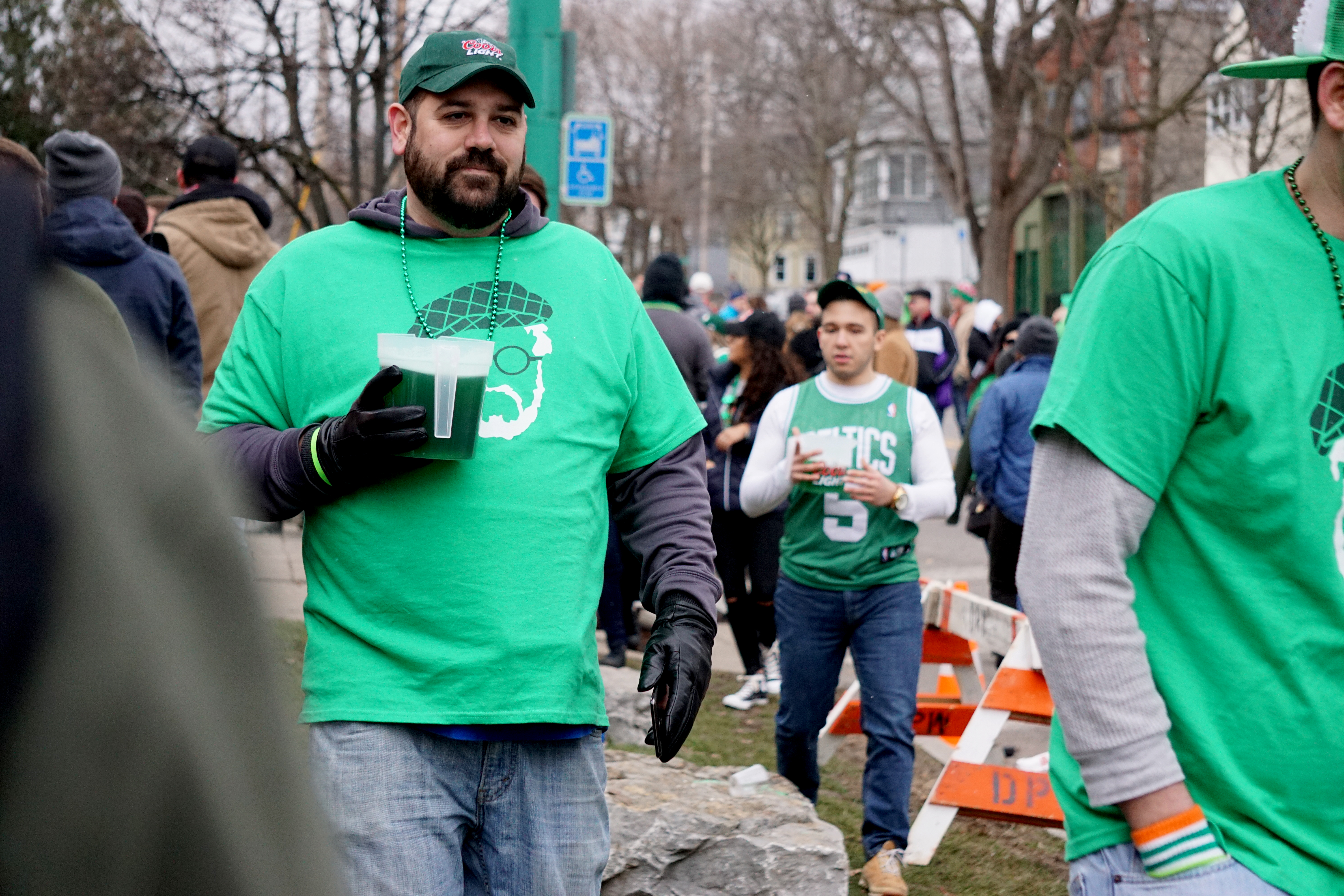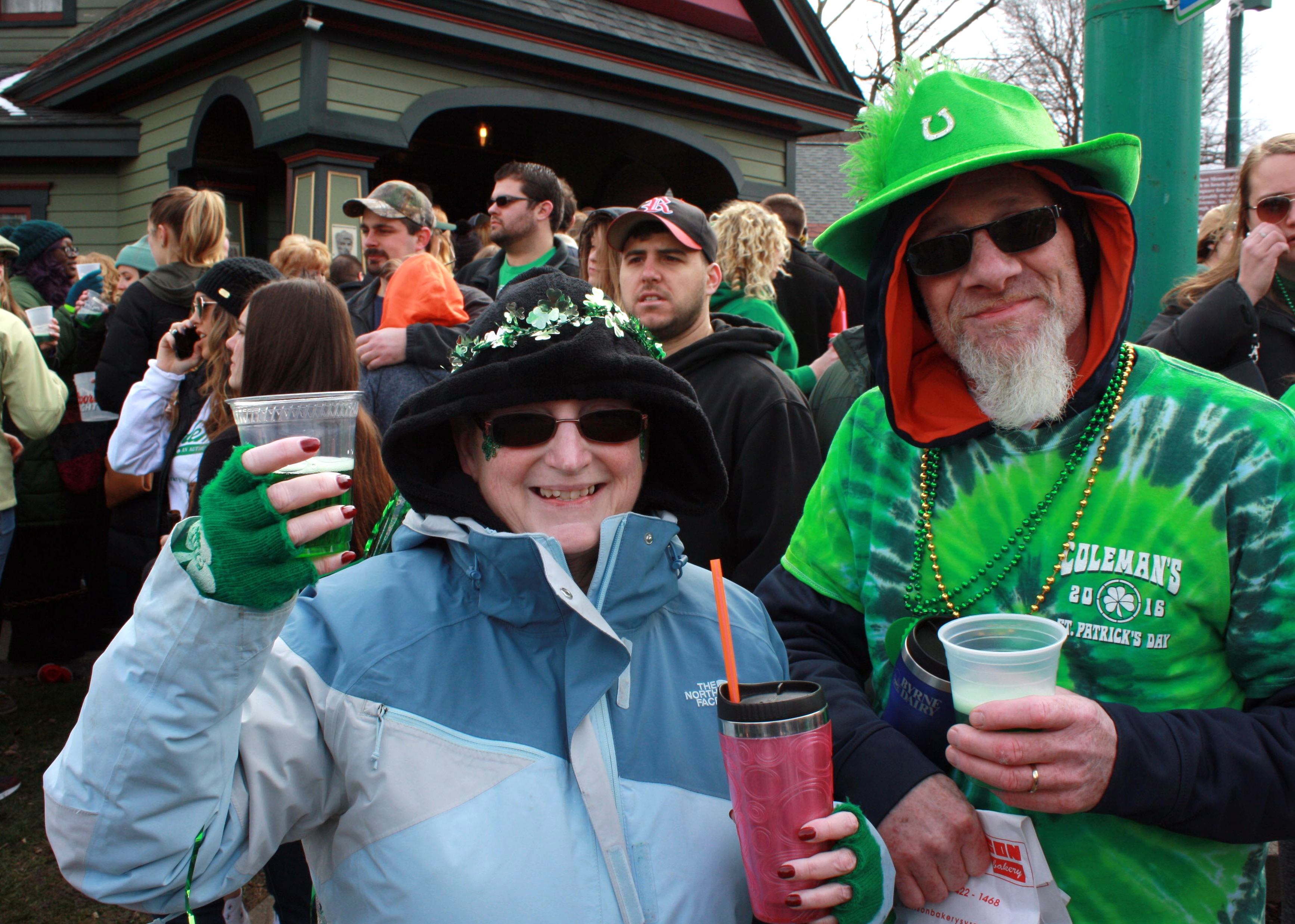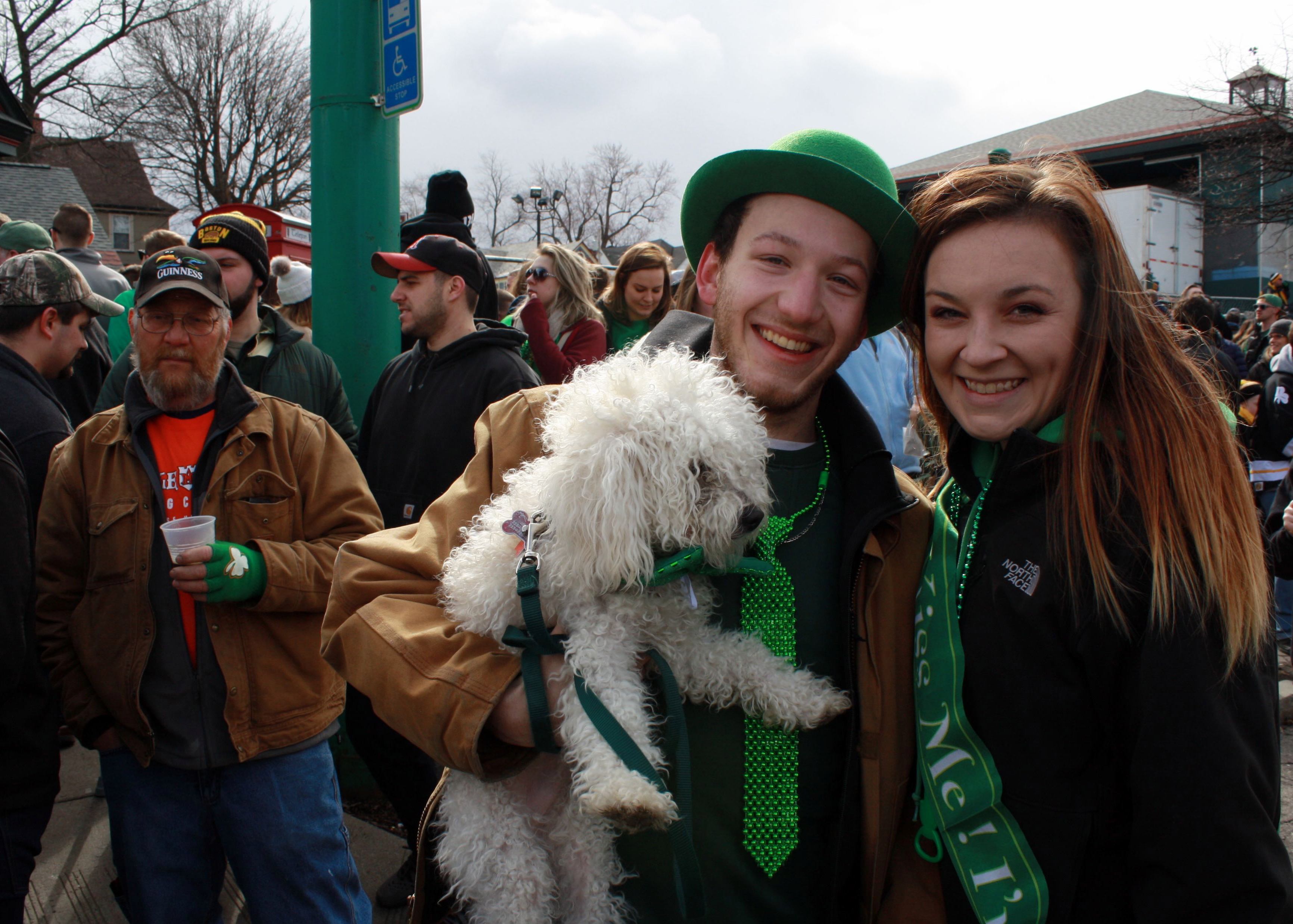By Audrey Morgan
A coach, a father figure, and a part-time bartender, Jeff Costello embodies the community spirit of Tipp Hill.
Jeff Costello stands behind the bar, serving the 1 p.m. crowd on a Monday at George O’Dea’s, one of 11 pubs that dot Tipperary Hill. Costello retired in October 2016 from his 31-year-stint at the U.S. Postal Service in sales, and in the past year, he’s picked up a couple shifts at the bar owned by one of his childhood friends, Jerry “Bones” Roesch. A customer asks about the history of the bar, and in case she has more questions, Costello writes down his number on a piece of paper, even though the owner, Roesch, sits only two seats down the bar .
“You would give your number instead of mine,” Roesch teases.
Indeed, he would. Costello, 57, grew up in Tipp Hill, and even though he resides in Geddes, everyone knows his face, which perpetually features a boyish grin. His small but muscular build lends him a scrappiness that benefits the work he does in the neighborhood — coaching and organizing groups like the Tipp Hill Athletic Association, the Leprechaun League, and Project Children. These positions earned him a host of honors, including a year-long reign as Co-Grand Marshal of Green Beer Sunday in 2015, alongside Roesch.
Costello credits his childhood coaches for the inspiration to start the Leprechaun League, a youth basketball program, in 1992, which he also did with Roesch. Although the school they attended, St. Pat’s, was converted into an apartment complex, they convinced the owners to maintain the gymnasium so the kids kept a place to gather and play. They use the building October through March for youth programs, including the Leprechaun League, which this year drew 86 participants.
Around the same time they started the league, Roesch conceived the idea for the Tipp Hill Athletic Association, which is, in fact, not about sports. The real goal: to establish a sense of community through volunteer work, and put men who may not normally hang out in the same room. Members include lawyers, construction workers, bar owners. They’ve raised thousands of dollars for local families undergoing challenges such as cancer and charities through events like the Saint Patrick’s Day Festival in Tipp Hill and the Irish Fest downtown.
Costello goes by the moniker Coz, given to him by Tipp Hill residents. “We’re famous for nicknames,” Costello explains. His is an offshoot of his older brother Jim’s, who is known as Cosi. Roesch, who lived on the same block as Costello, received his nickname, “Bones,” from a basketball coach, inspired by his ribs, which poked out during games of Shirts and Skins. Then there’s Costello’s younger brother, Jay, the Shamrocker — named for his boxing prowess.
Coz describes himself as a fun-loving kid. The eldest of his two sisters, Marilyn McNamara, recalls a story her dad loved to tell. She overdrew a bath in their house on the intersection of Bryant Avenue and Burnet Park Drive, causing a leak into the downstairs living room. Three-year-old Costello turned the household catastrophe into a party, dancing under the drops of water and giddily singing that the roof was raining on his head. “From the time he was little, he always had this brightness about him,” McNamara says.
In fact, most of Costello’s stories about growing up in Tipp Hill center around family. Days spent playing games in Burnet Park that lasted from morning till nightfall defined the summers. “I never knew anything other than how great life was,” Costello recalls. He cites a collage of him and his three brothers that features all of them in sixth grade at different times and all wearing the same shirt, a hand-me-down. “That was the first time I realized we didn’t have a lot,” he says.
Costello’s father worked for the postal service; his mother, whose parents hailed from County Tipperary, stayed at home before finding a job as a receptionist at a community hospital. He graduated from Bishop Blood High School, which became the nexus of all the now-defunct Irish-Catholic schools (St. Bridget’s, St. Lucy’s, St. Patrick’s). But it was at St. Patrick’s that he met his wife, Colleen, a speech therapist—in kindergarten.
They dated briefly in high school, but remained friends. Then, the summer before his freshman year at SUNY Cortland, Jeff asked his friend, Scott Mulholland, to approach a group of girls at a local bar and inquire the name of a blonde with her back turned to them. That blonde was Colleen. They married soon after college and had one son Justin, 33. And, before he worked for the Postal Service, Costello worked several jobs, taking bartending shifts when he could, to put Colleen through grad school at S.U.
These days, Costello can be found at the bar even when he’s not working. On a Saturday afternoon in early March, O’Dea’s draws onlookers from the annual Shamrock Run, as well as orange-decked patrons, who later will watch the SU basketball game. In anticipation of Costello joining them, Roesch and another friend, Pat O’Neill (Patty O for short) talk about their relationship with their friend over drinks (Bud Light for Roesch, plain cranberry juice for O’Neill). When asked about their favorite memories of Costello, the two friends quickly shift into a stand-up routine.
“Don’t have any,” Roesch deadpans.
“I hate the guy,” O’Neill chimes in.
The reality of their friendship also offers some comedic elements. Roesch serves as the perfect foil to Costello’s eternal optimism. “I’m a strict sort of pain in the ass. I’ve got a businessman mentality,” Roesch says. “I’m half German, so I’m pissed off at the world and too drunk to do anything about it.” That tightly wound world view often conflicts with Costello’s more haphazard approach to life. “He does so many goofy things,” Roesch says of Costello.
He always loses his keys, for instance. There’s the time he locked them in his car when it was still running after he’d taken the day off to play golf. Or, the time he wore the wrong jacket, which inevitably held the wrong pair of keys. Just this past year and to combat this perpetual problem, Costello asked Roesch to carry an extra set of keys in case he lost his. When Costello inevitably did lose his keys, they showed up a few weeks later. Randy Hoos, another local bar owner, plunged his toilet, and inside were Costello’s keys.
Just as the toilet story comes to an end, in walks its main character. “There’s the guy,” O’Neill calls out as Costello flits across the main room of O’Dea’s. “The GOAT,” Costello mouths with a grin. In reference to the youthful moniker “Greatest of All Time,” O’Neill’s son crowned them “the three GOATs” of Tipp Hill when they took a recent trip to Florida to visit Roesch’s brother-in-law on Valentine’s Day. The three took a helicopter ride and spent their days fishing and drinking. “Freaking rocked,” O’Neill adds.
But not all the stories that feature Costello highlight hilarity. Dennis Heaphy, a historian and filmmaker whose yard neighbored Costello’s as a child, remembers a more philosophical side. In fact, Heaphy and Costello used to meet at the corner of the block to discuss philosophy. “It’s not like we were quoting Nietzsche,” he says. But they had formed their own worldviews, discussing topics that weren’t a “common conversation” on Tipp Hill.
Then employed by the Postal Service, Jeff would send him collectible stamps inside an envelope addressed to “Dennis Heaphy, Street Corner Philosopher.” Eventually, that thoughtfulness found a local outlet, and the two combined their talents to videotape older residents of Tipp Hill with Dennis behind the camera and Jeff serving as interviewer.
“He’s always had a mic,” laughs Heaphy. Jeff took his curiosity to print when locals Jim Montague and Dick Brennan recruited him to write stories for a small newspaper called Everything Irish. The gig took him to the Kennedy Center and the Smithsonian, interviewing congressmen and musicians alike.
A few years back, a Dublin radio producer asked Heaphy and Costello for help with another project — putting together a comparative oral history of Tipperary Hill and County Tipperary in Ireland.
In the neighborhood, Costello also acts on his artistic inclinations every year with the annual shamrock painting tradition that occurs the night before St. Patrick’s Day. Each year, Roesch pours the paint, and Costello designs the shamrock with a mop. His cousin, Ricky O’Meara, began painting the shamrock at the intersection of Milton Avenue and Tompkins Street in the 1970s, enlisting the help of the late Scott Mulholland, one of Costello’s best friends. Costello explains the tradition’s origins with an earnestness, but O’Neill offers an easier explanation: “a lot of beer.”
Despite its boozy beginnings, today, its creators try to impart a more somber tone — perhaps a result of Costello’s own losses, including the deaths of two high school friends and his parents, plus a bout with breast cancer seven years ago. He asked the local churches for lists of the deceased to make the event more inclusive, according to McNamara, and calmed the crowds down, enlisting a friend to sing “Oh Danny Boy.” Today, the organizers read the names of every current or former resident who died in the past year.
Costello also extends his compassion to the living, such as his friend, Joe “JoJo” Leotta, a regular at O’Dea’s. The day of the Shamrock Run, Costello sits at the bar with Leotta, who is intellectually challenged. Since Leotta’s dad died 11 eleven years ago, Costello has adopted a fatherly role. Leotta’s mother, now on kidney dialysis, and his sister, a student, were unable to care for him after his father’s death. So, Costello stepped in, inviting JoJo to a Tipp Hill Athletic Club Association meeting after dropping off a casserole on behalf of Colleen’s church program.
This past year, they went to a Buffalo Bills game together. “Honestly, thank god for JoJo, because he’s almost like a calendar as a person—he remembers those details,” McNamara says. He’ll remind the forgetful Costello of his commitments. And Costello has become family. “We joke around,” says Leotta with a wide smile.
Costello cites empathy as his biggest value. “Sometimes I’ve been criticized in some ways. People would say I’m an easy mark, ya know?” he says.
Yet, that’s not how his friends see it. “He’ll annoy you he’s so happy,” says Roesch. “But he’s the greatest guy in the world.”

